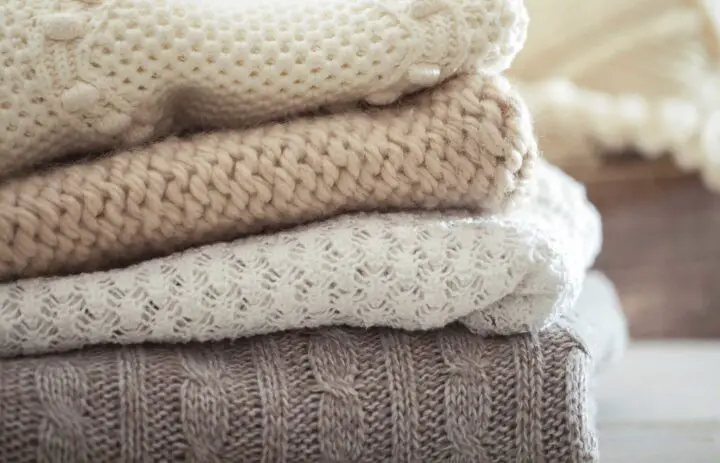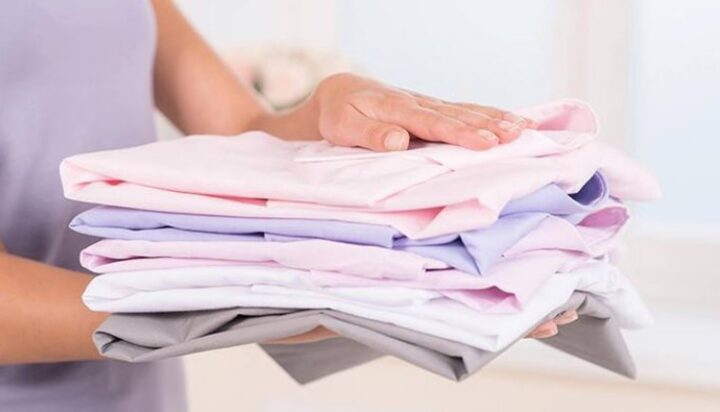
With the increasing growth of fast fashion, the lifespan of clothes is only getting shorter. Besides buying quality materials, you should also learn how to properly take care of your clothes so that they can last you longer.
Here’s our comprehensive guide on how to properly take care of your clothes:
Washing

You should learn how to properly wash all your clothes because one wrong setting can make you say goodbye to your favorite item on accident.
Different fabrics require different care when it comes to doing laundry. Here are a few:
Denim
Denim is a material that can shrink, and the color fades after some time. To avoid this, wash on a cold cycle. Turn your item inside out to prevent any damage from happening. If you can, air-dry denim clothes to avoid shrinkage.
Denim jeans do not need to be washed frequently. Depending on your lifestyle, you can rewear jeans up to 10 times before they need a wash.
Wool

Wool is one of the most delicate materials. It’s naturally resistant to staining, so it doesn’t require to be washed too often. For wool, it’s recommended to wash by hand, but if you have to use the machine, keep the cycle cold and turn on the “delicate” setting.
Don’t put wool in a dryer. Instead, leave it flat on a towel so it can properly dry and be ready for another wear.
You don’t have to wash wool too often. You can hang the item outside if the weather allows it, and that will be enough to refresh it.
Cotton
You can wash cotton clothing on a slightly warmer cycle, but not too hot. Cotton is prone to fading, so avoid washing it too often. Keep your darker and lighter colors separate to prevent the color from bleeding onto your other items.
Cotton clothing should be washed every 1-2 wears.
Silk
Silk is one of the most delicate materials you can have. If you don’t have the option of taking your silk garment to be dry-cleaned, you can hand-wash it. Use cold water, and don’t put multiple items in one batch, as the color can bleed.
Don’t wring out silk items; instead, gently squeeze the water out and lay the garment flat to air dry. Keep silk items out of direct sunlight.
Here are some more tips when it comes to washing your clothes properly:
Separate the colors
Darker colors bleed more often than light ones, and it can cause stains that are almost impossible to fix later. This step is especially important if you’re mixing different materials together.
Learn how to read labels

Reading the labels on your clothing is essential for taking proper care of them. Depending on the material and the structure, different garments need different care. Learn how to read the symbols to know exactly how to proceed with washing and drying.
Some items may only be suitable for dry cleaning. There are services that offer to pick up and deliver the clothes right to your doorstep. This saves you the hassle of taking your clothes to dry cleaning and back. If you want your clothes handled by professionals, click here.
Use a mesh bag
Mesh bags will protect your delicate clothes from snagging and tearing during the cycle. You can get them in multiple sizes and reuse them. They’re useful for smaller items that often get lost, like your underwear or socks.
Don’t use harsh chemicals
The majority of laundry detergents contain harsh chemicals that can damage the fibers. Read the ingredient list and opt for more natural alternatives made with plant-based ingredients that are gentle on your items and environmentally friendly.
Treat stains on the spot
Don’t leave the stains for too long to set into the fibers. If possible, treat the spot right away. You can buy one of the many stain remover pens available to have on hand.
Most stains can be treated on the spot with detergent. Dab it lightly on the spot from the underside of the item. Rinse out with cold water.
Don’t wear clothes too often

Clothes need to be aired out and left alone so that the fibers can go back to their original shape. Everything that contains elastic needs time to relax; that’s why rotating the items is important.
Check for stains before storing clothes
If you re-wear items multiple times before washing, make sure that the items are stain-free before you leave them in the closet. Examine the area around the collar in particular. This is where stains from lotion or makeup can build up. If you find any, throw the shirt in the washer immediately to avoid permanent stains.
Check for stains before ironing
Hot irons can set the stain. Before ironing, make sure there aren’t any dirty spots. If there is, rewash the item and treat the spot properly.
Be mindful of moths
Moths are annoying, and they can also ruin your clothes. Since moths are attracted to dirt and odor, make sure that all the clothes in your wardrobe are clean before you store them away.
To avoid infestation, you can buy lavender sacks that will repel the insects and make sure your clothes smell nice too.
Learn how to sew

Taking care of your clothes and being careful is important; however, accidents can happen. If you’re traveling somewhere, it’s good to keep a sewing kit with you. Most hotels have them too. You may need to fix a button or a broken seam, so it’s good to be prepared.
Properly store the clothes
After you have washed your clothes, you should properly store them so they last longer.
Your clothing storage, whether it’s a wardrobe or a separate room, should be clean and dry at all times. Another important consideration is to make sure that there is enough room for your clothing to breathe. Your clothing may become damaged if you cram it into a tight space since this creates friction.
If you want to prevent your clothes from being misshaped when you take them off the hanger, then use wooden hangers, as they are a much better choice than plastic or wire ones.
A general rule is to hang items that can wrinkle easily, like silk, chiffon, or linen. Dress pants and suits should also be hung. Items you should always fold are sweaters, especially wool ones; active wear; and cotton shirts. Sweaters can easily lose their shape and stretch if they are allowed to be handled by gravity for an extended period of time. The same holds true for activewear. It can become loose and stretch on a hanger.
